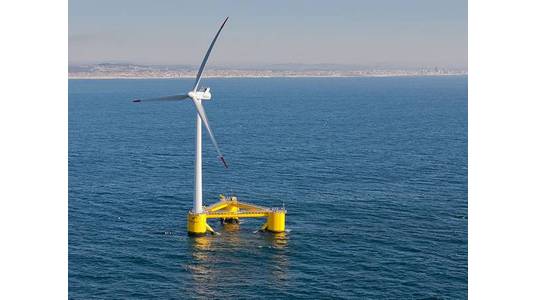
Floating offshore wind, despite the currently low installed capacity, could be the next frontier in wind power development in the Asia Pacific with almost limitless potential, says Wood Mackenzie, adding the total investment in the sector could be worth US$58 billion, counting the projects in the early planning stages.
"A significant market for floating offshore [wind] technology is emerging in Asia. Developers in Japan, South Korea and Taiwan have announced plans to develop key demonstration projects, although the scale of deployment is still limited compared to conventional fixed-bottom technology."
Floating offshore wind accounts for just 6% capacity of the 26 gigawatts (GW) of new offshore capacity expected in the current decade in the Asia Pacific excluding China.
Wood Mackenzie's principal analyst Robert Liew said: "This 1.56 GW of new floating offshore capacity in Japan, South Korea, and Taiwan will require investments of at least US$8 billion. If we consider the additional 9 GW project pipeline in early planning stages, total investment opportunities could be worth up to US$58 billion."
Maintaining power supply is a key challenge for these markets as legacy thermal plants reach the end of their project life and opportunity for new-build coal and nuclear are severely limited, Wood Mackenzie said. The three Northeast Asian markets face projected thermal and nuclear capacity retirements totaling 89 GW from 2020 to 2030.
Liew said: “Governments in these markets are increasingly looking to renewables to fill the supply gap, but due to land constraints, scalable options are limited. Floating offshore wind is starting to gain more attention but the high cost remains a major barrier to widespread adoption of this technology.
“To ensure the long-term sustainability of floating offshore wind, prices must come down significantly to at least be competitive with new-build gas power.”
With a limited track record and only 21 megawatts (MW) of operating floating demonstration units, there is high uncertainty over project costs in Asia Pacific markets. For now, the Japanese government estimates that current capex costs of floating offshore can be as high as U$10 million per MW but could be commercially feasible if brought down to US$4 million/MW, compared to grounded offshore capex cost of US$2-3 million/MW and average Asia Pacific onshore wind capex cost of US$1.5 million/MW by 2030.
Capex to decline 40%
Wood Mackenzie expects the average capex costs of floating offshore wind farm in the three pioneering markets to decline by around 40% to US$2.6 - 4 million per MW by 2025-2030.
Despite the cost challenge, Woodmac says, governments in Japan and South Korea have set out support policies for the sector.
In Japan, a feed-in tariff is available for floating projects compared to bottom-fixed offshore projects which are moving to price discovery through auctions.
A small-scale 22-MW floating wind auction in the Goto Islands is also testing whether prices can be lower than the current feed-in tariff. In South Korea, floating offshore projects can be awarded higher weightings of renewable energy certificates depending on the distance between interconnection facilities, Woodmac says.
Liew said: “With enough government support, developers will be more willing to bet on floating wind. Building a firm pipeline of floating projects will give the sector more forward visibility, which in turn will attract even more investors.”
Part of the buy-in from the government is the long-term vision to establish a domestic floating offshore wind supply chain that will benefit the local economy. Floating offshore requires more vessels to install turbines compared to mainstream grounded offshore projects. This is attractive to governments that historically had a large domestic maritime sector.
"The Japanese and Korean governments are keen to establish a floating offshore supply chain hub for the region and potential future exports to other markets. This could also contribute significantly to lowering costs,” Liew added.
He said: “Floating offshore represents perhaps the largest frontier for wind power in Asia Pacific in the long-term. There is significant future upside as almost all markets in Asia Pacific have coastlines and floating offshore can unlock wind resources near coastal cities even in low wind speed areas. Despite the limited scale today, floating offshore wind offers almost limitless potential.”